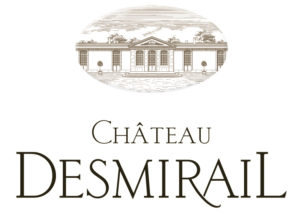
The Estate
The name Desmirail has been associated with wine production in the Médoc region since the end of the 17th century. Jean Desmirail, a lawyer in Bordeaux’s parliament, gave his name to the property when he received it as part of his wife’s dowry.
The château belonged to the Desmirail family until just before the 1855 classification, when it was purchased by Monsieur Sipière, the estate manager at Château Margaux. It was under his ownership that Desmirail was classified as a Troisième Grand Cru Classé.
At the beginning of the 20th century, the property was briefly owned by Robert de Mendelssohn, the nephew of the famous composer, before being acquired by Martial Michel, a glove maker from the north of France. Michel went on to sell the château shortly before the outbreak of World War II to Château Palmer.
The Château Palmer company owned the property for several years before selling it to Lucien Lurton, an iconic figure in the Bordeaux wine world, in 1980.
In 1992, Lucien Lurton passed on his properties to each of his 10 children. Denis, one of the older children and a lawyer by profession, took over the management of Château Desmirail. Today Denis is taking his father’s work even further, modernizing the wine making facilities and putting all of his energy into the development of this Grand Cru Classé.

Château Desmirail Margaux 3ème Grand Cru Classé
Terroir: The vineyard lies on deep valleys that were created during the Quaternary period, between 650,000 and 250,000 years before our era. The gravel and pebbles, derived from the Pyrenee mountains, were transported by the waters of the Garonne and deposited into terrace formations. These deposits were subsequently eroded, so they stand today in the form of gravel ridges culminating around 20 meters. Desmirail is spread over 3 communes of the appellation Margaux: Cantenac, Arsac, and Soussans.
Production Area: 34 hectares
Average Age of the Vines: 25 years old
Plantation Density: 7,692 hl/ha
Grape Varieties: 70% Cabernet Sauvignon, 29% Merlot, and 1% Petit Verdot (percentages differ depending on the vintage)
Vines: These grape varieties are grown using sustainable and environmentally friendly techniques with minimum use of pesticides. The soil is worked in various traditional ways (ploughing into mounds around the base of the vines in the winter, returning of the soil into space between the vines in the spring, etc.) and treatments are adapted to the weather conditions.
Annual Production: 80,000 bottles
Vinification: The grapes are vinified separately by plot and varietal in order to express the diversity of the terroirs. The winemaking takes place in 2 vats: one in wood used for the oldest plots, the other in stainless steel completely renovated in 1997. 40% new barrels.
Serving Temperature: 17 °C
Cellaring Potential: 18 years
2015 Reviews: “…very comely, feminine and perfumed nose brandishing a whole bunch of rose petals in the glass. The palate is very well balanced, fleshy but still structured with fine grain tannin.”-92pts, Wine Advocate
2012 Reviews: “This is a polished, new-wood flavored wine that has hints of mint as well as an herbal character. It’s juicy and soft with black currant fruits lending an attractive aftertaste.”-90pts, Wine Enthusiast


